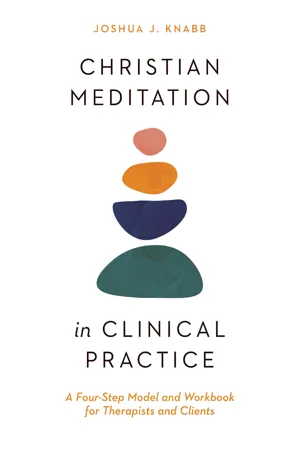IN THIS FIRST CHAPTER, I explore the burgeoning transdiagnostic literature,1 including the difference between lumping and splitting strategies for psychiatric diagnosing,2 and provide justification for a lumping approach (i.e., identifying and treating common psychological processes across diagnoses). I also present in more detail the different types of transdiagnostic processes in the psychology literature, which are organized around problems with cognition (repetitive negative thinking), affect (impaired emotional clarity and distress intolerance), behavior (behavioral avoidance), the self (perfectionism), and relationships (impaired mentalization).3 Throughout the chapter, I offer explanations and an exercise for you to gain more insight into the nature of transdiagnostic processes.
THE PREVALENCE AND COMORBIDITY OF MENTAL DISORDERS IN CONTEMPORARY SOCIETY
In the United States, the lifetime prevalence among adults is about 20 percent for mood disorders and 35 percent for anxiety disorders,4 which are two of the more common types of psychiatric disorders in contemporary Western society. In other words, about one in five adults will struggle with depression in their lifetime, to the point of meeting criteria for a formal psychiatric diagnosis, whereas about one in three will meet full criteria for an anxiety disorder. Beyond the United States, a recent worldwide survey revealed that about 30 percent of people will suffer from a common mental disorder (e.g., mood, anxiety) at some point in their adult years.5 Even more troubling, the majority of people who suffer from a depressive disorder may also struggle with an anxiety disorder at the same time, referred to as “comorbidity.”6 These data suggest that depression and anxiety, which are often experienced together, may be quite common in both contemporary Western society and the non-Western world.
For depressive disorders (e.g., major depressive disorder), symptoms may include a low mood, a struggle to enjoy previously pleasurable activities, trouble sleeping, energy loss, impaired concentration, thoughts of worthlessness, and excessive guilt, among others.7 With anxiety disorders (e.g., panic disorder, social anxiety disorder, generalized anxiety disorder), symptoms may include trouble breathing, shaking, dizziness, fear of judgment by others in social situations, and chronic worry, to name a few.8 Combined, depressive and anxiety disorders are often referred to as emotional disorders in the psychology literature, since they frequently occur together among adult populations. Said differently, in recent years, psychologists have started to include these types of diagnoses in the same category in order to better understand their common ingredients and develop intervention strategies to treat an amalgam of psychiatric symptoms at the same time.
LUMPING VERSUS SPLITTING IN THE PSYCHOLOGY LITERATURE
In the psychology literature, psychologists often differentiate between lumping and splitting approaches to understanding and treating a variety of mental processes that impair functioning.9 With lumping, researchers attempt to elucidate common psychological experiences that transcend any one particular diagnosis. In other words, an effort is made to make sense of patterns of thoughts, feelings, and behaviors that are observed across diagnostic categories. As an example, in the last decade, authors have identified “impaired emotional clarity” as a potential mental process that can help to explain the development and maintenance of a variety of psychiatric diagnoses.10 More specifically, some people may struggle to identify and make sense of their emotional experiences, with this struggle linked to depression and anxiety.11 As another example, openness to the future has been explored of late, with researchers identifying this positive emotional state as the ability to maintain a sense of confidence in, and acceptance of, future life experiences.12 In a recent study, openness to the future was negatively linked to depression and anxiety, meaning people who have a more positive view of the future also report fewer symptoms of depression and anxiety.13
With splitting, researchers strive to cultivate an understanding of the unique psychological experiences for each mental disorder, then target the corresponding symptoms with disorder-specific interventions. For instance, psychologists may attempt to make better sense of the most salient symptoms of panic disorder, including panic-related thoughts, feelings, and behaviors and a preoccupation with subsequent panic attacks, then develop a manualized approach that teaches coping skills to ameliorate the disorder. As each new edition of the Diagnostic and Statistical Manual of Mental Disorders (DSM)14 seems to add more diagnoses to its running list, a splitting approach requires additional manualized interventions to be researched in order to treat an ever-growing number of mental disorders.15
REASONS FOR A TRANSDIAGNOSTIC APPROACH IN THE PSYCHOLOGY LITERATURE
Yet, this splitting strategy may not be the most helpful approach for responding to psychological suffering in the twenty-first century, given some of the growing concerns about the DSM, now in its fifth edition.16 First, although the DSM can be extremely helpful in identifying a cluster of symptoms and, thus, offering a common language for describing psychological struggles among both mental health professionals and consumers of mental health services, the vast number of diagnoses (currently over 300 in the latest DSM) leaves us vulnerable to pathologizing normal (albeit unfortunate) experiences of psychological suffering,17 especially in a fallen, imperfect world. In other words, there is seldom a clear-cut dividing line between health and dysfunction when striving to understand the human continuum of thoughts, feelings, and behaviors.18 What is more, many individuals struggle with more than one diagnosis, which raises the question of whether dichotomous boundaries also exist from disorder to disorder in the real world.
Second, as we organize psychological suffering into more and more categories, we must, in turn, develop corresponding treatment approaches. However, someone with multiple diagnoses may not have the time, money, or energy to participate in multiple interventions to treat a list of psychiatric diagnoses.19 This dilemma, too, goes for mental health professionals, who may not have the resources to deliver separate treatments, anchored to different diagnoses, to the same person seeking services. Rather, understanding and treating common mental processes that are experienced across diagnostic categories may be the most efficient option.
COMMON TRANSDIAGNOSTIC PROCESSES IN THE PSYCHOLOGY LITERATURE
As was briefly mentioned in the introduction chapter, we will be focusing on transdiagnostic processes within five domains: thinking, feeling, behaving, the self, and relationships. Although each of these areas is explored individually and in much more detail in subsequent chapters, below are some of their basic ingredients, including examples of how each mental process may impair daily functioning in the Christian life.
Cognition. With repetitive negative thinking, we may ruminate and worry, perseverating as a rigid thinking style on a daily basis.20 This type of thinking, more specifically, involves ruminating about the past and worrying about the future. With ruminating, we may dwell on a past conversation or event, whereas worrying may consist of anticipating a dangerous situation in the near or distant future. In either case, we may end up getting lost in our thoughts, so much so that we have a hard time focusing on the life that is unfolding before us in the present moment. When this is the case, we may struggle to fulfill our daily obligations, since we are lost in a sea of cognitive distractions. Even more, we may struggle to recognize God’s presence in the here-and-now. We may also get lost in the details of events, conversations, and so forth, and have a hard time seeing the bigger picture. In the psychology literature, perseverative thinking is linked to both depressive and anxiety-related symptoms.21
Affect. When it comes to impaired emotional clarity, we may struggle to identify and understand our emotional world,22 especially when it comes to recognizing the role that our emotions play in daily life. In fact, we may end up having a hard time understanding even our most basic emotions (e.g., sadness, fear, anxiety, guilt), including their positive influence in helping us to make decisions, navigate relationships, and so on. With distress intolerance, we may struggle to accept the inevitable uncertainties, frustrations, emotions, and physical sensations of daily life.23 When this happens, we may have a hard time fulfilling daily responsibilities and obligations, as well as recognizing what God is communicating to us in our emotional experiences. For example, if we struggle to accept the uncertainties of life, we may have a hard time making decisions about the future and recognizing God’s will for the days, weeks, months, and years ahead, choosing instead to procrastinate in an attempt to delay committing to a course of action for fear of making a mistake. In the psychology literature, impaired emotional clarity is associated with both depressive and anxiety-related symptoms,24 as is distress intolerance.25
Behavior. In the behavior domain, we may struggle to live the life God has called us to live, engaging in avoidance behaviors in an attempt to somehow rid ourselves of daily pain.26 More specifically, we may withdraw or hide in an effort to eliminate unpleasant thoughts and feelings, which likely only makes matters worse given our psychological pain continues to persist, with the added struggle of falling behind on our daily obligations. Even more troubling, we may end up declining to follow Jesus because of the cost of letting go of the things we are dually distracted by and attached to (Mk 10:17-27). In the psychology literature, behavioral avoidance is linked to both depressive and anxiety-related symptoms.27
The self. Regarding the self, we may have perfectionistic tendencies, including standards that are u...

